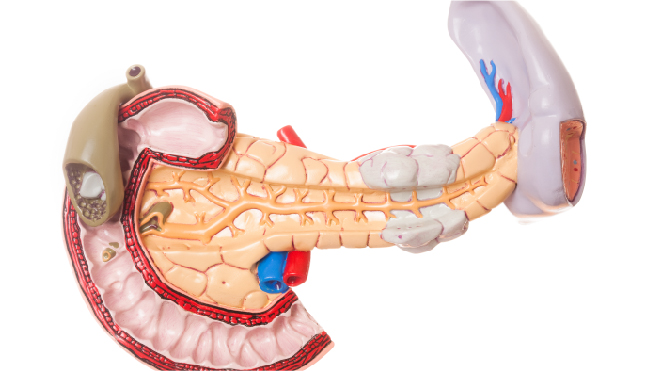Gallbladder cancer as the name suggests, begins in the gallbladder, an organ that stores a substance called bile. To read about gallbladder and gallbladder cancer, click here
How is gallbladder cancer staged?
Staging of gallbladder cancer helps the doctors figure out the on how much the cancer has spread in the body and determine its best treatment. Staging also helps to calculate survival statistics too. The lower the number of the stage, the less is the cancer has spread, with early stages being 1 and the most advanced stage being 4. The staging system and the other factors taken into consideration to determine the stage of thyroid cancer are as follows:
TNM method:
Cancer types that form tumours are staged using TNM system and the same method is used for gallbladder cancer too, TNM stands for stands for tumour, node and metastasis.
Tumour(T):
Tumour(T) generally is used to categorize the size of the primary tumour but in this case, it used to reflect the extent to which the cancer has spread to the walls of the gallbladder. The gallbladder has several layers listed below in the order of innermost to the outermost layers:
- The epithelium, a thin layer of cells that lines the interior wall of the gallbladder.
- The lamina propria, a layer of loose connective tissues.
- The muscularis, a layer of muscular tissue that helps the gallbladder contract to push the bile into the bile duct.
- The perimuscular, a layer lining the muscularis made up of fibrous tissue.
- The serosa which forms the outer covering of gallbladder and comes from the peritoneum (lining of the abdominal cavity).
Node(N):
The node describes whether the cancer has spread to the nearby lymph nodes or not. N0 represents no spreading of the cancer to the lymph nodes, N1 represents the spreading of cancer to nearby one to three lymph nodes and N2 stands for spreading to 4 or more lymph nodes.
Metastasis(M):
This gives information about the cancer spreading to other parts of the body, M0 represents no metastasis while M1 stands for metastasized tumours.
Read more about the staging of gallbladder cancer here
Stage I of gallbladder cancer:
Gallbladder cancers diagnosed in stage I are mostly found by accident and it is very rare to be detected at this stage. About 20% of the cases found are during surgeries for gallstones or inflammation of the gallbladder.
At this stage, the cancer has grown into the lamina propria or the muscularis but has not spread to nearby lymph nodes or distant organs and the staging is (T1, N0, M0).
How is stage I gallbladder treated?
Surgery is the best method for treating early gallbladder cancer, read more about it here. In early stage I of gallbladder cancer, treatment beyond cholecystectomy may not be needed. If the cancer has spread to the muscle layer or is in part of the gallbladder that is close to the liver, an extended cholecystectomy is prefered.
Cholecystectomy:
Cholecystectomy is a common procedure used to surgically remove the gallbladder and there are two main ways to remove it. Laparoscopic cholecystectomy involves making small cuts or incisions in the abdomen and using fine surgical instruments to remove the gallbladder pieces while open cholecystectomy involves a single large incision to access and remove the organ.
Extended cholecystectomy:
In case there is a risk of the cancer coming back after a simple cholecystectomy, extended or radical cholecystectomy will be done and this prefered more often a simple cholecystectomy. This involves removal of the gallbladder, an inch or more of the liver tissue next to the gallbladder and all the lymph nodes in the region, depending on the spread of the cancer and the patient’s health, more organs or parts may be removed too.




